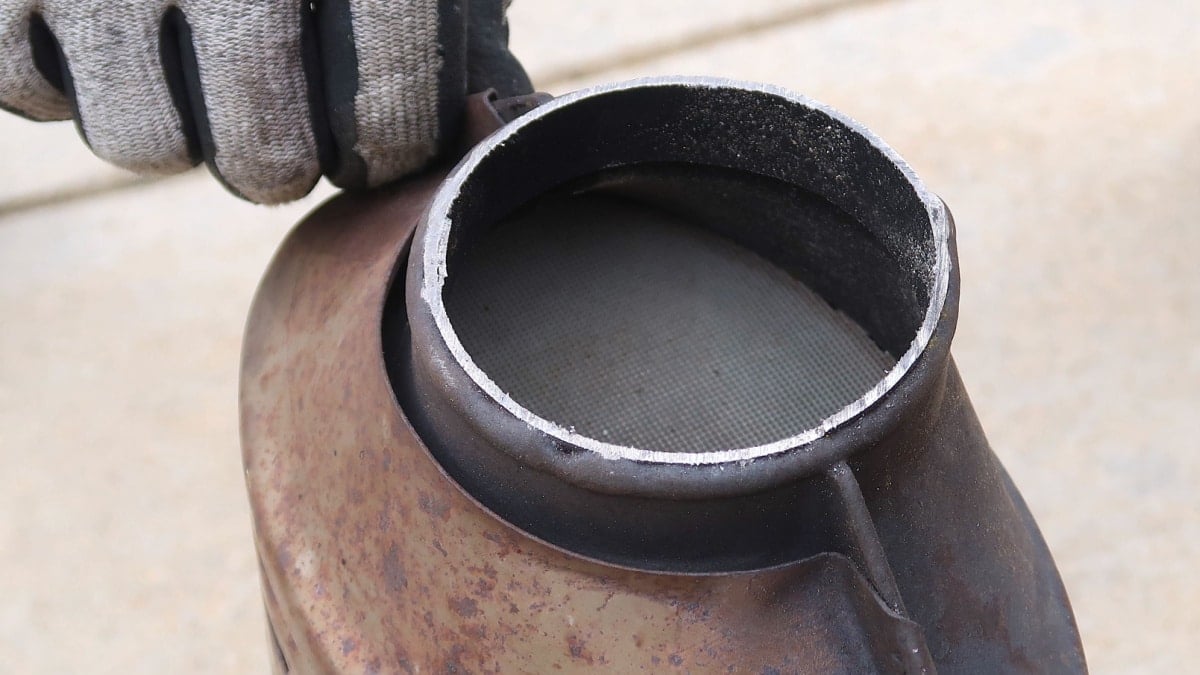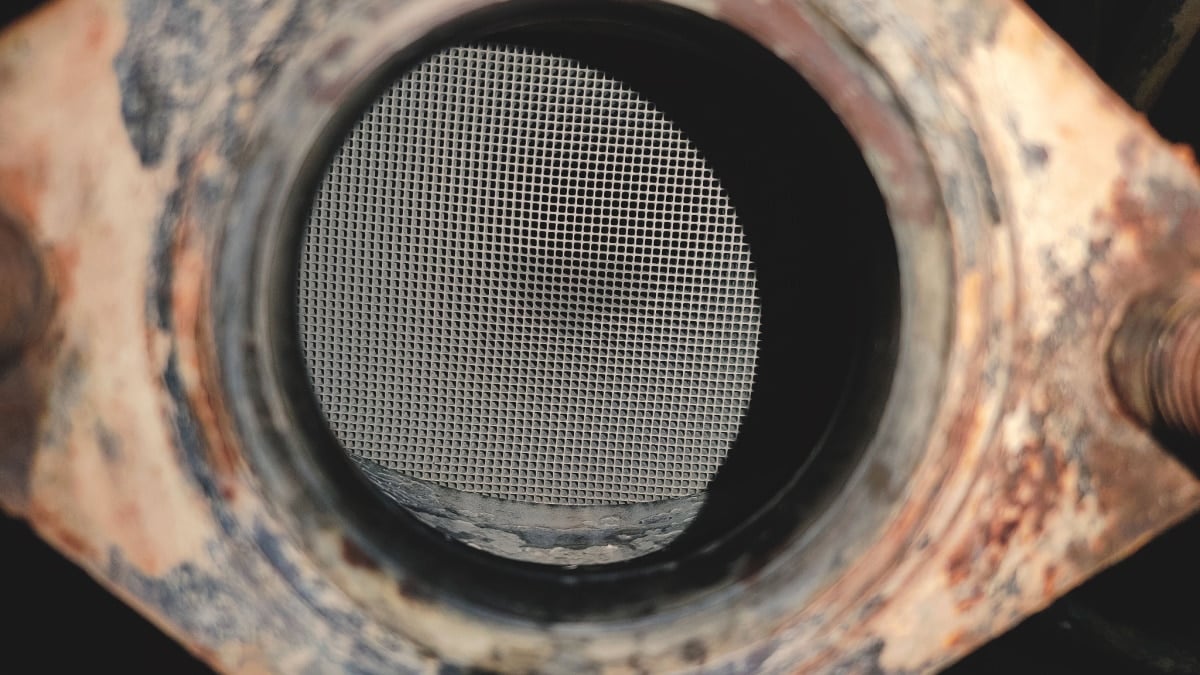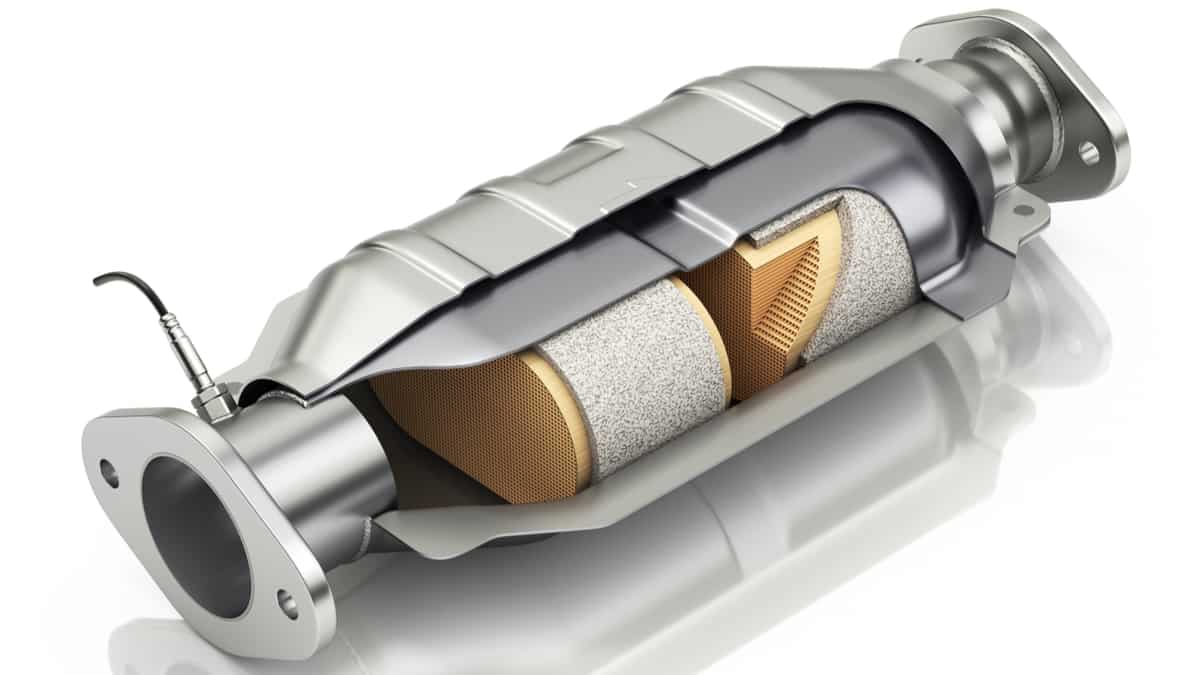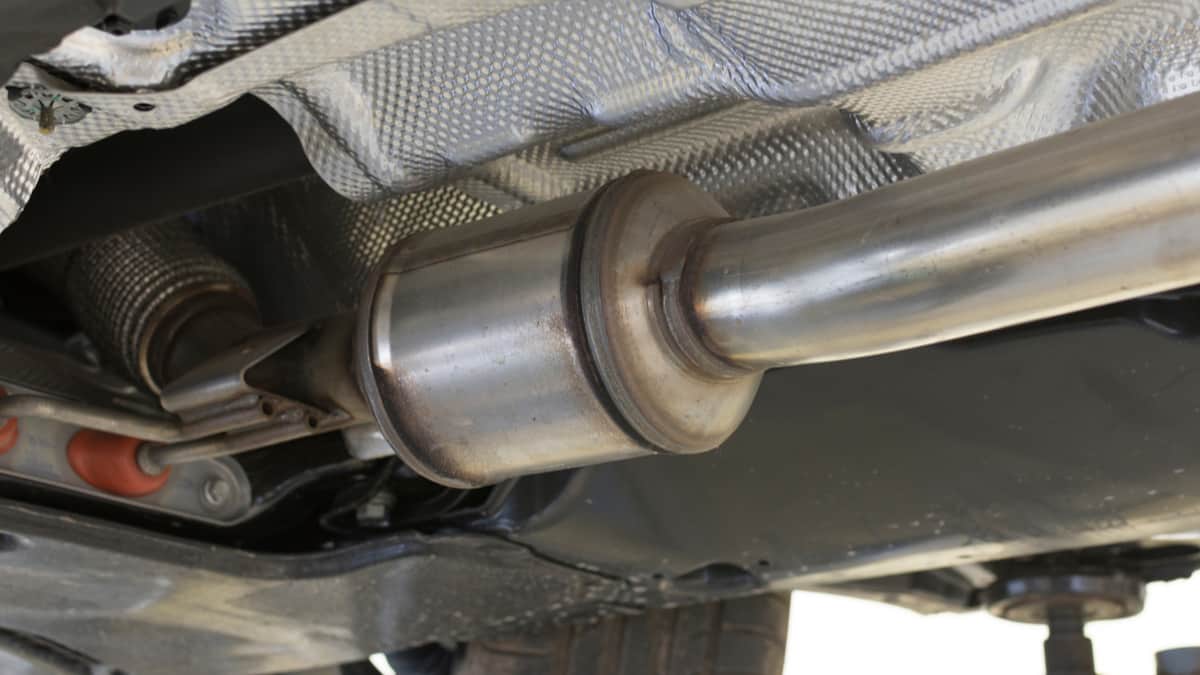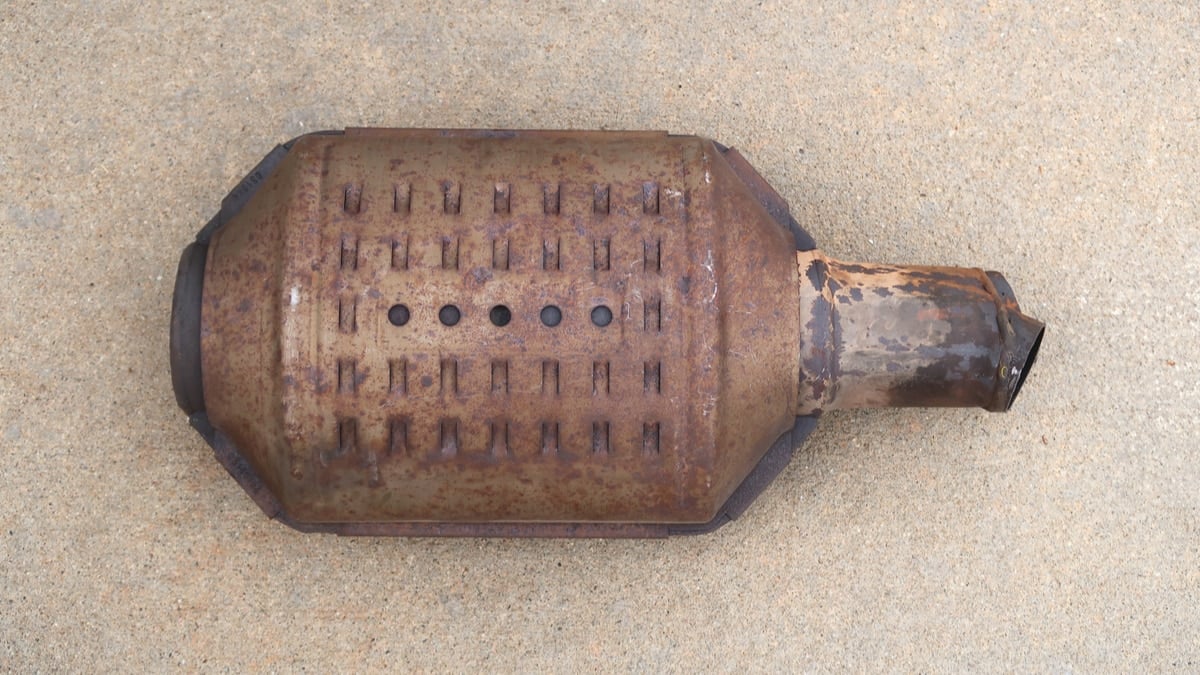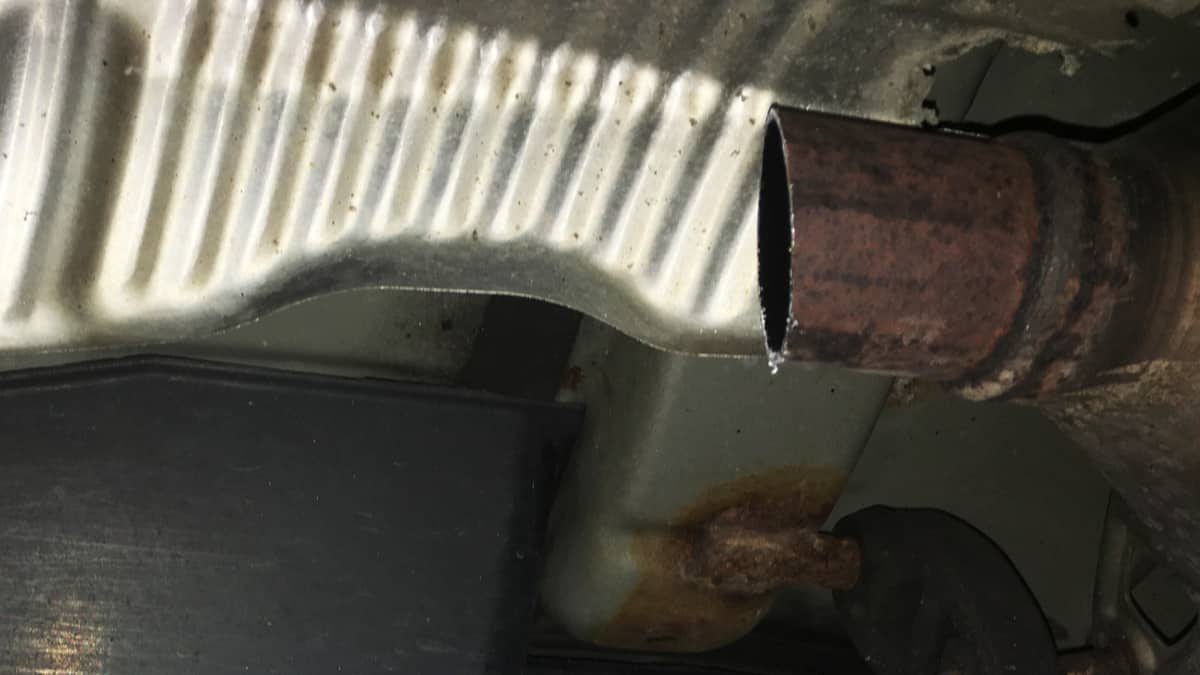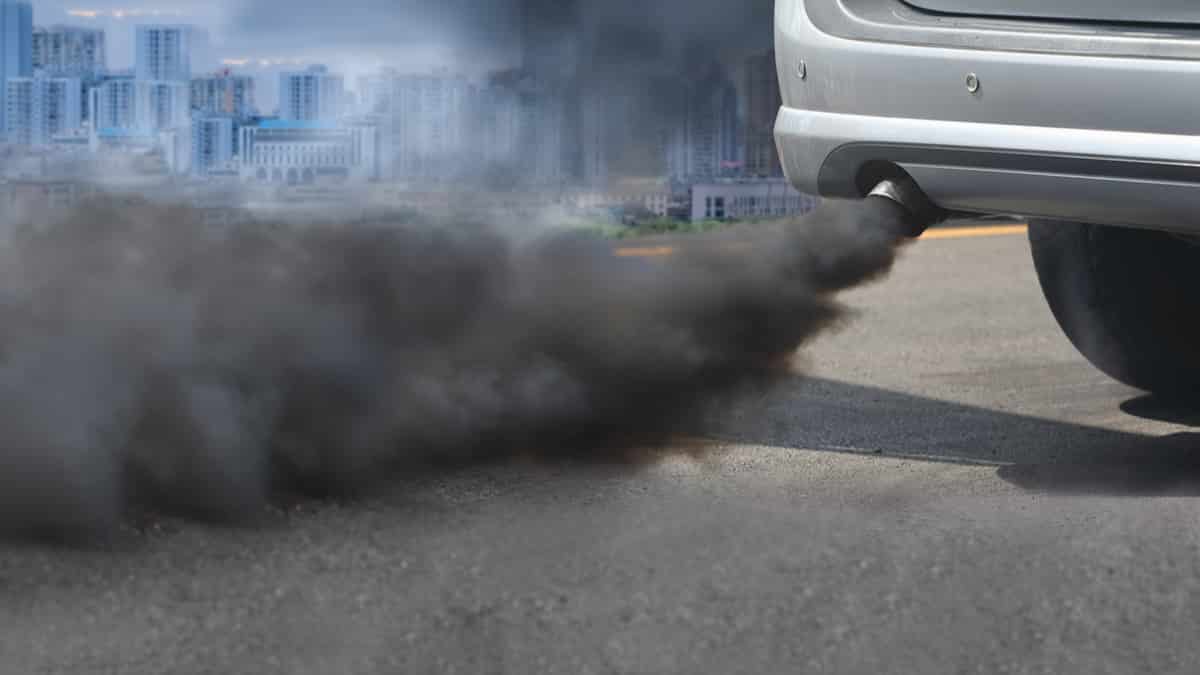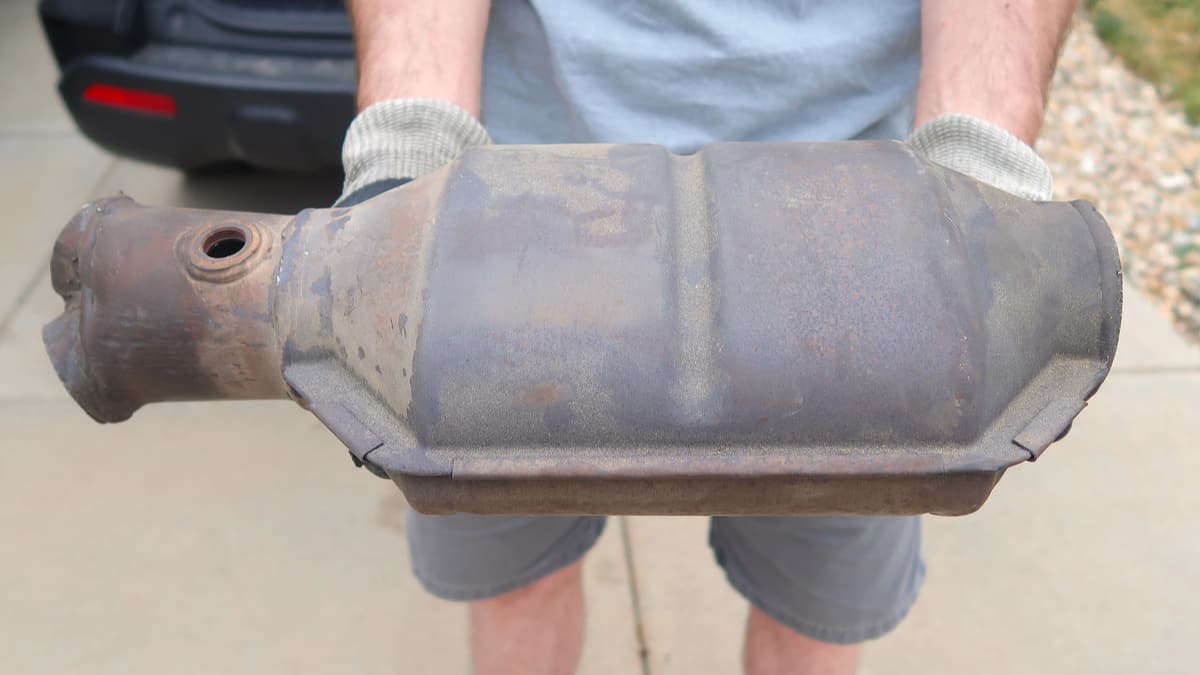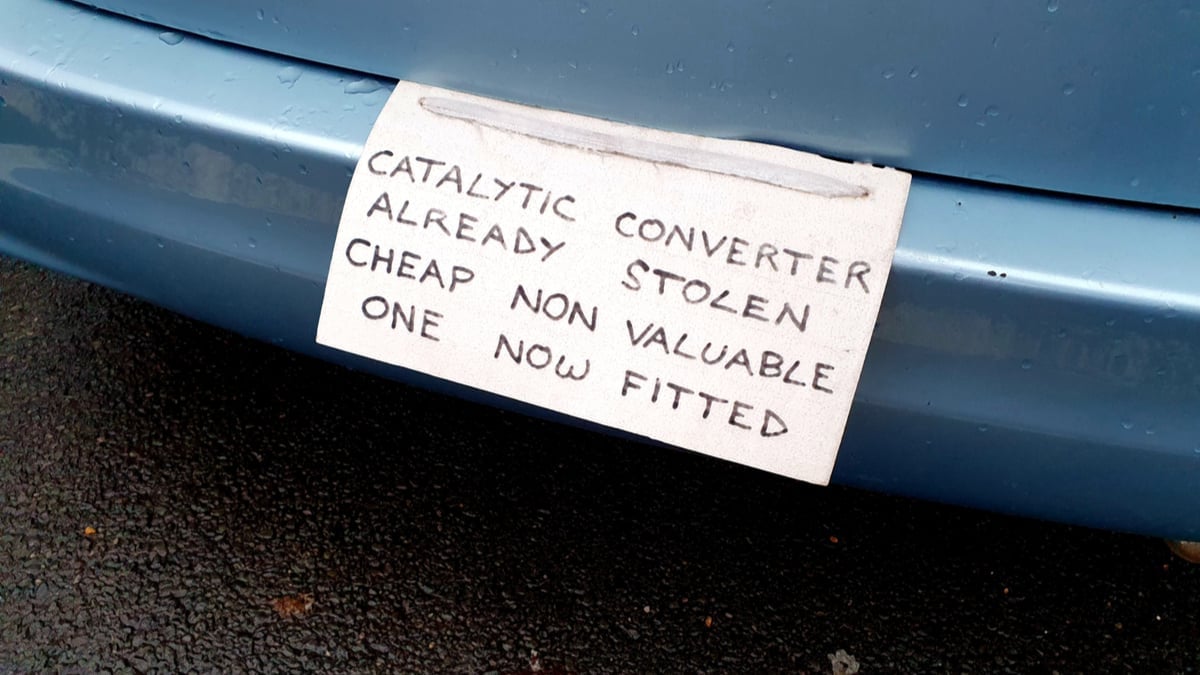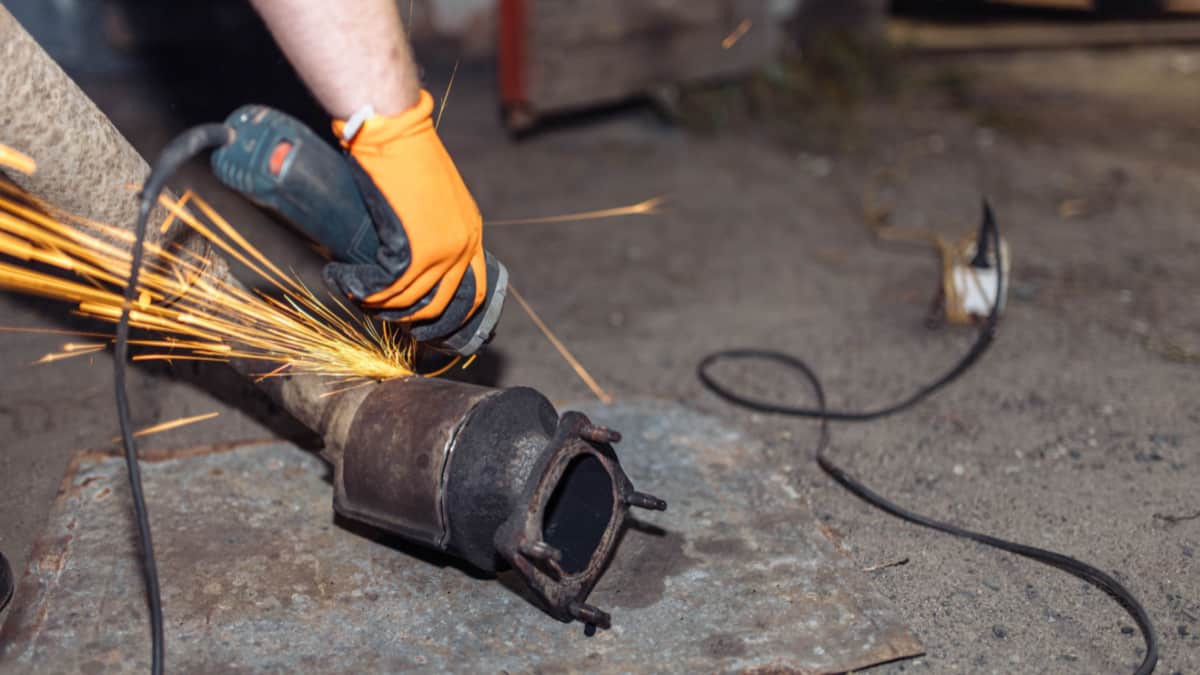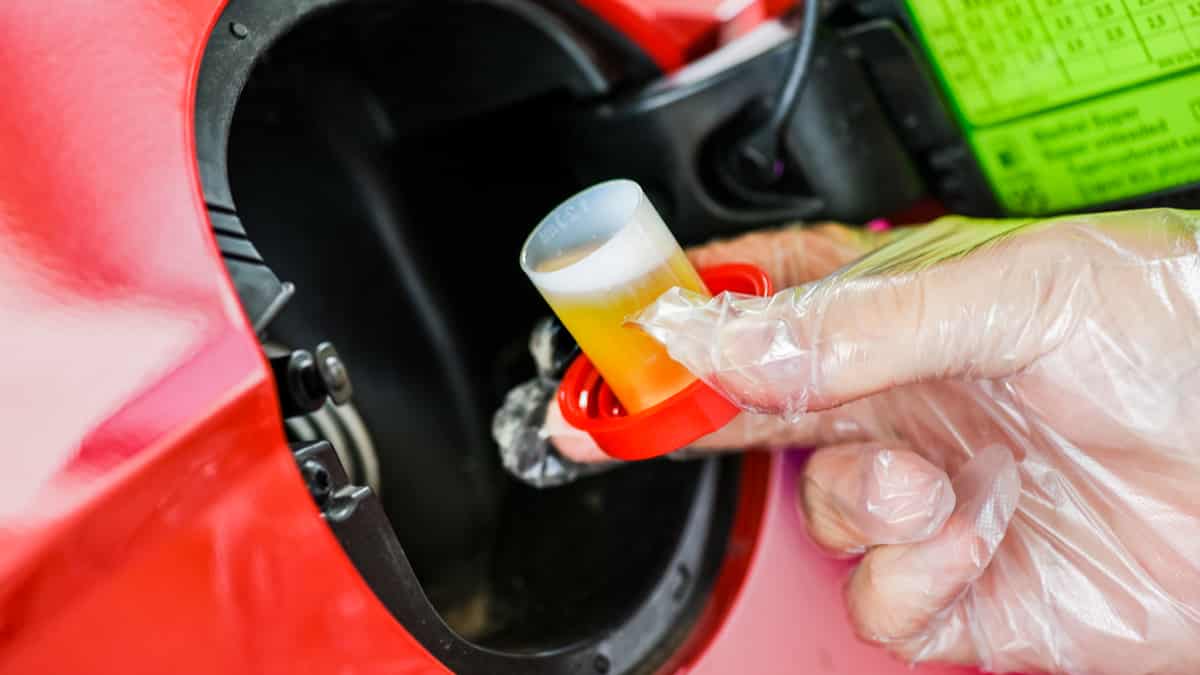The catalytic converter is a major part of the car’s emissions system. It’s needed to convert harmful exhaust toxins into some that are better for the environment. Because of its operation, the converter can become clogged. If you know how to unclog a catalytic converter, you may be able to save yourself from a hefty repair cost.
In this guide, we cover the top ways to clean out the catalytic converter. We also look at the symptoms of a clogged catalytic converter and show you how maintaining it can keep the cat in its best condition. At the end of the guide, we dive deeper into the cost of replacing a catalytic converter if cleaning doesn’t work.
How to Unclog a Catalytic Converter Without Removing It
You can unclog a catalytic converter without removing it by applying a fuel additive or using the “Italian tune-up” method. In some cases, you may need to take the catalytic converter off to clean out the clog, which requires more skill and time.
Here is some more detailed information on how to remove a catalytic converter without removing it:
1. Fuel Additive
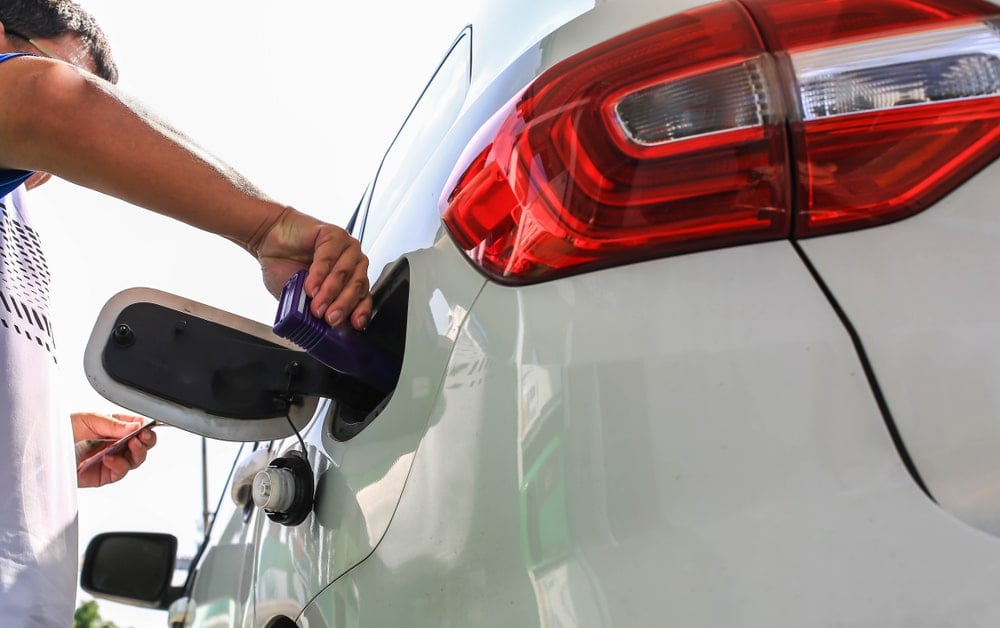
There are many high-quality fuel additives that will help to clean out the catalytic converter. Many people rave about the effects of CataClean fuel cleaner. You can also choose additives from Rislone, CRC, Chevron, STP and Lucas.
Before you decide what additive to use, take some time to research the options. Depending on what symptoms you are facing and your budget, you might find that one suits you better than another.
It’s important to follow all of the directions on the bottle that you choose. Most of them require the fuel tank to be filled to a certain degree and you will have to drive for a short time to feel any effects of the cleaner. Because this is the least expensive method and easiest way of cleaning, it’s often tried before anything else.
However, cleaners are only meant to be effective if the catalytic converter isn’t completely clogged. The benefit of using the cleaners is that the entire fuel system gets attention. These formulas can remove contamination to the oxygen sensors and passageways.
2. “Italian Tune-Up” Method
Unlike a conventional car tune-up, the Italian Tune-Up was created by Ferrari as a way to burn off unnecessary carbon buildup. If you are gentle on your car all of the time, you may not be getting the catalytic converter hot enough to burn through these deposits, leading to a clog. For maximum effectiveness, you want the cat to reach between 800 °F and 1,832 °F.
Push your engine to run under full throttle for as long as possible. If you can step on the accelerator hard while pulling out or get on a track for full throttle laps, you will burn up some of those deposits sitting in the exhaust. Some people prefer to push the car engine hard for a minute during each drive, ensuring that buildup never occurs in the first place.
However, you don’t want to constantly push your engine too hard or you could face other failures. Additionally, these methods should never be tried if you fear that engine components are already failing. Otherwise, you might deal with other auto repairs before you want to.
RELATED: How to Clean a Catalytic Converter Without Removing it
Unclogging the Catalytic Converter by Removing It
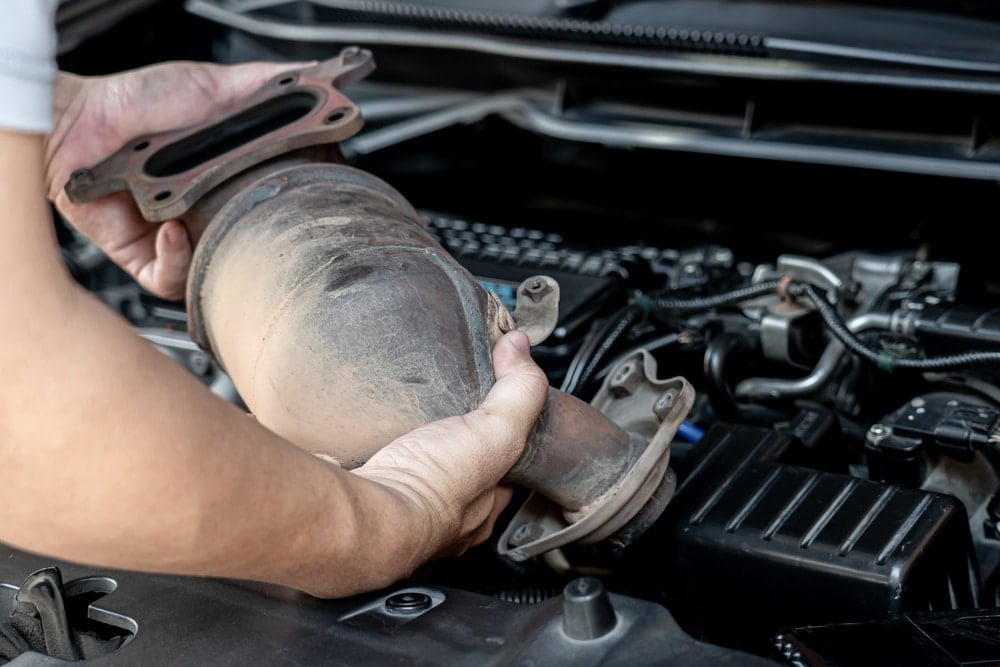
If the other methods haven’t worked for you, it’s time to take the catalytic converter off to clean it. Start by gathering some supplies for the job. You will need a large container and penetrating oil. It’s also important to have a secure floor jack and jack stands. Aside from these tools, you also need a pressure washer and impact wrench.
Before you work on the catalytic converter, you must let the exhaust cool down. Otherwise, you could get burnt. You should also read through the steps in your car’s service manual for directions related to your particular model. Once the cat is cooled, follow these generalized steps unless they contradict anything found by the manufacturer.
- Jack up the car and secure it on jack stands.
- Remove the oxygen sensor.
- Use penetrating oil to get the bolts loosened.
- Take the catalytic converter off and inspect it. If there’s a rattle inside the cat, you will need to replace it. If nothing is heard, you may be able to continue cleaning it.
- With a pressure washer, wash out the catalytic converter at low pressure.
- Immerse the cat in degreaser and hot water.
- Rinse it back out with your pressure washer on low once again.
- Allow the catalytic converter to drain and dry completely.
- Once it is dry, you can reinstall the cat.
- Reinstall the oxygen sensor and secure everything back in place.
If you run into trouble with these steps or you are unsure how to perform the cleaning, it’s best to visit a professional auto repair shop. You can also watch some YouTube videos that might help explain the process better.
RELATED: Catalytic Converter Delete – Pros and Cons
How To Tell The Catalytic Converter Is Clogged?
1. Check Engine Light
In most cases of a clogged catalytic converter, the Check Engine Light will come on. Because there’s an issue with the emissions system, the sensors will trigger a malfunction that causes the warning light to illuminate.
The only way to remove the Check Engine Light is to clean the clog out of the converter or replace the cat. You can determine what is causing the light to come on by reading the codes that come from your OBD-II diagnostic scanner.
2. Failed Emissions Test
In some regions, you are required to go for regular emissions testing to get the car registered and inspected. However, when the emissions system isn’t running at full capacity, the vehicle could fail the test.
You are sure to get a failed report when the catalytic converter is clogged because the vital part can’t exchange the harmful gases for those that are less toxic. However, other problems can also lead to a failed test, such as a bad oxygen sensor. For this reason, you will need your code scanner to figure out what’s going on.
3. Rotten Egg Smell
When the catalytic converter becomes clogged, you may start to notice a rotten egg smell. Some people recognize that this odor comes from the Sulfur presence.
Because the clogged cat can’t convert the pollutants properly, you are left with this obnoxious smell. Sadly, car air fresheners aren’t going to do the trick. You must clean or replace the converter to rid your vehicle of this smell.
4. Lack of Engine Performance
When a clog occurs in the catalytic converter, back pressure within the exhaust can exist. Because the exhaust gets trapped, it can move back toward the combustion chamber.
Your car’s engine must have the right balance of air and fuel at all times. If any exhaust comes back into the engine, you are going to notice some trouble with the performance. Additionally, the Check Engine Light will come on because of the imbalance if, for some reason, it isn’t already lit up.
5. Increased Fuel Consumption
When the catalytic converter becomes clogged, the car can’t run as efficiently as it once did. The problem goes back to those trapped gases we just discussed. Any imbalance in the air and fuel ratio changes how much gas is needed to keep the car running.
You may find yourself pushing harder on the accelerator to get the car to respond. You could also spend more time filling up the tank because of what’s being wasted.
READ MORE: 9 Symptoms of a Bad or Clogged Catalytic Converter
Catalytic Converter Maintenance
If you want to avoid dealing with a clogged catalytic converter, it’s important to take good care of the exhaust system. Here are a few tips that will prevent clogs from occurring.
- Drive your vehicle often. It’s best to use the systems than to let them sit.
- Keep up with the regular maintenance. Oil changes, spark plug replacement and air filter service all help to keep the car running its best, so less needs to occur in the catalytic converter.
- Use higher octane fuel if recommended by the automaker.
- Fix any problems that occur right away. Running with defective systems can put more strain on the catalytic converter.
When properly cared for, the catalytic converter should last ten years or more. For the small cost it takes to maintain your vehicle, it’s best to avoid replacement wherever possible.
Cost to Replace a Clogged Catalytic Converter
The average cost for catalytic converter replacement is between $900 and $2,500, although some cars can cost far more. The reason for the high cost has nothing to do with the labor charges. In fact, most catalytic converters are simple to replace.
Instead, the cost is driven up due to the number of precious metals that are located within the catalytic converter. The more metals a converter uses, the more you can expect to pay for it. Additionally, some vehicles use more than one converter, making the cost even higher if they both need to be replaced.
RELATED: Can You Drive Without A Catalytic Converter?
Can You Unclog a Catalytic Converter at Home?
It doesn’t take a lot of expertise to clean the converter with simple methods. In fact, most people will start with a cheaper option before seeking professional help. By using an additive or running the Italian tune-up method, you are spending very little money and are only out a minimal amount of time.
Even if you have to take the converter off to clean it, the process doesn’t take long. With some simple tools and equipment, you could give it a try in your home garage.
Can You Use a Hammer to Unclog a Catalytic Converter?
There are many sites online promoting the use of a hammer to bang out the loose debris within the catalytic converter. While this might unclog it, the method can also render your catalytic converter useless. The precious metals inside the converter must remain intact for the conversions to occur. Otherwise, the catalytic convert is simply hollowed out and your car could once again fail emissions testing.
Can You Drive With a Worn Catalytic Converter?
The worn catalytic converter may not hinder your vehicle from running unless it creates performance issues. However, you are allowing dangerous gases to enter the atmosphere, which hurts the environment. You could also go through more fuel than needed and fail an emissions test, so it’s best to have it cleaned out.
What Causes Catalytic Converter Failure?
Catalytic converters get clogged and damaged when other systems aren’t functioning correctly. Whether there’s a buildup on the spark plugs or a malfunctioning oxygen sensor, the converter works harder, leading to failure. It can also be caused by carbon buildup from not heating up the converter enough.
Is Cataclean Good for Cleaning the Converter?
Cataclean is not a cure-all for clogged converters, no matter what you are told online. Still, this is one of the most effective cat cleaners on the market. It can help reduce buildup that leads to clogs and is often recommended for regular usage as a preventative maintenance option.
If your car isn’t running the way it should, your problem could be a clogged catalytic converter. Thankfully, you have multiple options when it comes to learning how to unclog a catalytic converter. Whether you choose to put an additive into the tank or you choose to try out the “Italian tune-up” method, you may find it possible to clean the catalytic converter without taking it off of the car.
Otherwise, your at-home efforts will require removing the catalytic converter from the vehicle. The worst-case scenario is that the catalytic converter will need to be replaced, which can be an expensive fix. For that reason alone, it’s important to take good care of the car engine and the converter.
Learn more:
- Which Cars Are Most and Least Likely to Have Catalytic Converters Stolen?
- Do Diesel Engines Have Catalytic Converters?
- How To Protect Your Car Against Catalytic Converter Theft
- Do All Cars Have a Catalytic Converter?
Categories: Cleaning & Detailing, Exhaust
